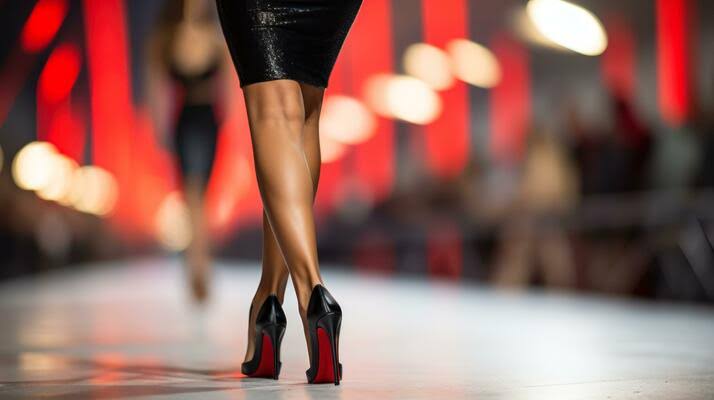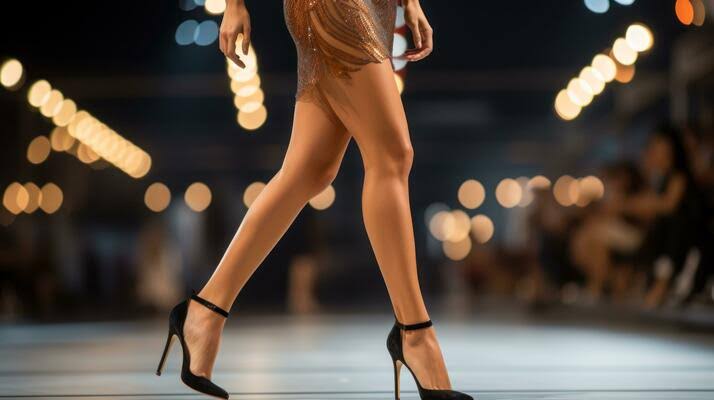SILENT STRIDES - inclusion on the runway
- Posted on 21 May, 2025
- By Helen Chinyere

Fashion has always been a mirror to society, reflecting its values, celebrating its diversity, and pushing boundaries. Yet, for all its glorious creativity, the fashion industry has long struggled with true inclusivity. While strides have been made in representing different races, body types, and gender identities, one group remains largely overlooked on the global runway: the Deaf community.
Deaf individuals who dream of modeling often find themselves sidelined, not due to a lack of talent or passion, but because of systemic barriers and misconceptions. Traditional casting processes tend to rely heavily on verbal communication and fast-paced instructions often inaccessible to Deaf models without proper support. Additionally, many in the industry still hold the false belief that being Deaf limits one’s ability to express, perform, or connect with an audience.  But fashion is about visual storytelling, and who better to master this language than those who have lived their lives communicating through visuals? Deaf models bring a unique energy, presence, and expressiveness that can transform the runway. Their inclusion is not about charity; it’s about recognizing talent, embracing differences, and challenging outdated norms.
Fortunately, change is on the horizon. Pioneering Deaf models like Nyle DiMarco, Sofia Jirau, and Chella Man have used their platforms to advocate for greater accessibility and awareness. Some fashion shows now offer sign language interpreters backstage, visual cue systems, or use inclusive casting calls that welcome models of all abilities. These steps, though small, are powerful signals of progress.
Still, true inclusion requires more than symbolic gestures. Agencies need to actively scout and support Deaf talent. Designers should consider accessibility not just in shows, but in campaigns and collaborations. Event organizers must ensure backstage environments are Deaf-friendly, with trained staff and inclusive communication tools. Schools and modeling programs should also offer Deaf-inclusive training, breaking down communication barriers from the ground up.
But fashion is about visual storytelling, and who better to master this language than those who have lived their lives communicating through visuals? Deaf models bring a unique energy, presence, and expressiveness that can transform the runway. Their inclusion is not about charity; it’s about recognizing talent, embracing differences, and challenging outdated norms.
Fortunately, change is on the horizon. Pioneering Deaf models like Nyle DiMarco, Sofia Jirau, and Chella Man have used their platforms to advocate for greater accessibility and awareness. Some fashion shows now offer sign language interpreters backstage, visual cue systems, or use inclusive casting calls that welcome models of all abilities. These steps, though small, are powerful signals of progress.
Still, true inclusion requires more than symbolic gestures. Agencies need to actively scout and support Deaf talent. Designers should consider accessibility not just in shows, but in campaigns and collaborations. Event organizers must ensure backstage environments are Deaf-friendly, with trained staff and inclusive communication tools. Schools and modeling programs should also offer Deaf-inclusive training, breaking down communication barriers from the ground up.  Inclusion on the runway isn’t just about fairness; it’s about enriching the creative world. The fashion industry thrives on boldness and innovation. Welcoming Deaf models into this space is not only a step toward justice but a spark for new inspiration. It reminds us that beauty, talent, and style know no limits and that the runway should be a place where everyone’s voice, spoken or signed, can be seen and celebrated.
Inclusion on the runway isn’t just about fairness; it’s about enriching the creative world. The fashion industry thrives on boldness and innovation. Welcoming Deaf models into this space is not only a step toward justice but a spark for new inspiration. It reminds us that beauty, talent, and style know no limits and that the runway should be a place where everyone’s voice, spoken or signed, can be seen and celebrated.

